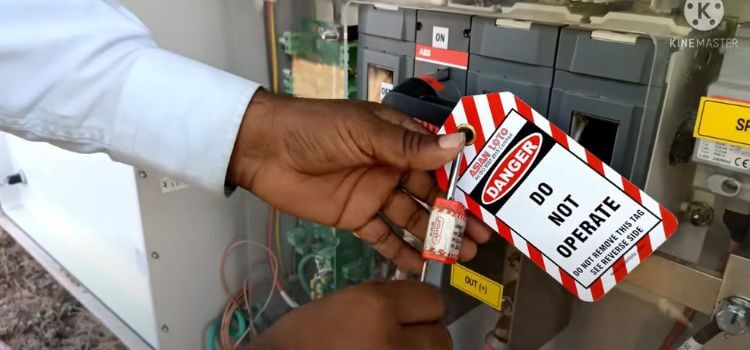As an Amazon Associate, I earn from qualifying purchases.
In various industries, ensuring safety and compliance is paramount. One critical safety tool widely used across sectors is the Do Not Operate (DNO) tag. This tag is a vital warning to prevent the operation of machinery or equipment under certain conditions. Understanding DNO tags’ proper use and significance can help mitigate risks, ensure worker safety, and maintain regulatory compliance.
What is a Do Not Operate Tag?

A Do Not Operate tag is a crucial safety device used to indicate that the piece of equipment or machinery should not be operated. These tags are typically used during maintenance, repair, or when equipment is deemed unsafe. They are crucial in industries such as manufacturing, construction, and energy, where the improper use of machinery can lead to severe injuries or fatalities.
Features of Do Not Operate Tags
Visibility: DNO tags are usually brightly colored and prominently placed to ensure they are easily noticeable.
Durability: Made from great materials that can withstand harsh environments, ensuring that they remain intact and legible.
Information: Contains detailed information including the tag’s reason, the tagging date, and the person responsible for placing the tag.
Compliance: Designed to meet specific regulatory standards, ensuring legal compliance.
Importance of Do Not Operate Tags
Ensuring Safety
The primary purpose of a Do Not Operate tag is to prevent accidents. By clearly indicating that equipment should not be used, these tags help avoid unintended operations that could lead to injuries.
Compliance with enactment
Many regulatory bodies, including OSHA (Occupational Safety and Health Administration), must require the use of DNO tags. Non-compliance can result in hefty fines and also include the legal consequences.
Preventing Damage to Equipment
Operating machinery that is under maintenance or has known issues can cause significant damage. DNO tags help ensure that equipment is only used when it is safe and functional, thereby extending its lifespan.
How to Properly Use Do Not Operate Tags

Steps for Tagging
Identify the Need: Determine if the equipment needs to be tagged based on its condition or scheduled maintenance.
Complete the Tag: Fill out all necessary information on the tag, including the reason for tagging and your contact details.
Attach the Tag: Place the tag in a top visible location on the right equipment.
Communicate: Inform all relevant personnel about the tagged equipment and the reason behind it.
Removal of Tags
Identify Safety: Confirm that the right equipment is safe to operate.
Notify Personnel: Inform all relevant individuals that the tag will be removed.
Remove the Tag: Carefully remove the tag and document the removal process.
Common Mistakes and How to Avoid Them
Incomplete Information
Always confirm that the tag contains all the right required information. Missing details can lead to confusion and unsafe operation.
Improper Placement
Tags should be placed where they are visible. Avoid placing them in areas where they can be easily available overlooked or obscured.
Ignoring Tag Rules
Never ignore or remove a tag without proper authorization. This can lead to severe safety violations and accidents.
Best Practices for Implementing a Do Not Operate Tag System
Training
Regular training sessions for employees on the most vitally important and correct usage of DNO tags are crucial. This helps in building a culture of safety and compliance.
Regular Audits
Conduct regular audits to ensure that all equipment that requires tagging is properly tagged and that tags are used correctly.
Clear Communication
Establish clear communication channels so that all employees are aware of tagging procedures and any changes to tagged equipment.
Use of Technology
Leveraging technology such as digital tags and tracking systems can enhance the effectiveness of the DNO tag system, making it easier to manage and monitor.
Conclusion
The Do Not Operate tag is an indispensable tool in maintaining workplace safety and regulatory compliance. By understanding its importance, proper usage, and right practices, organizations can significantly reduce all the risks of accidents and also equipment damage. Implementing a robust DNO tag system requires a commitment to training, regular audits, and clear communication, ensuring that safety remains a top priority.
As an Amazon Associate, I earn from qualifying purchases.
Leave a Reply